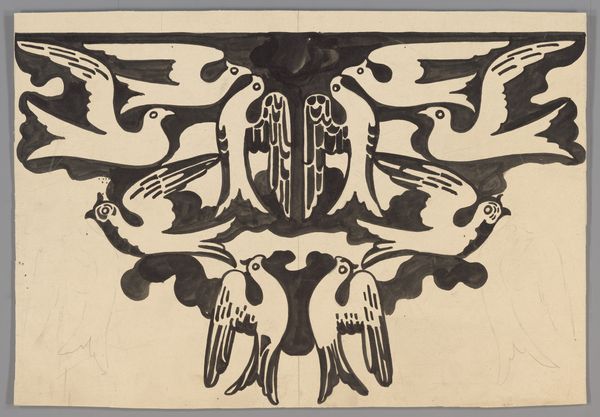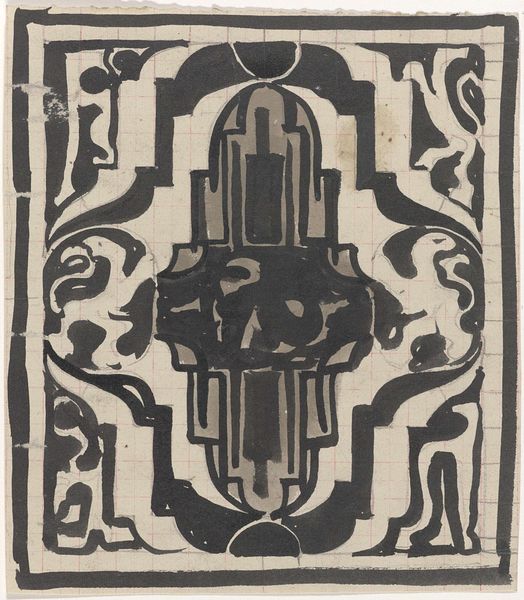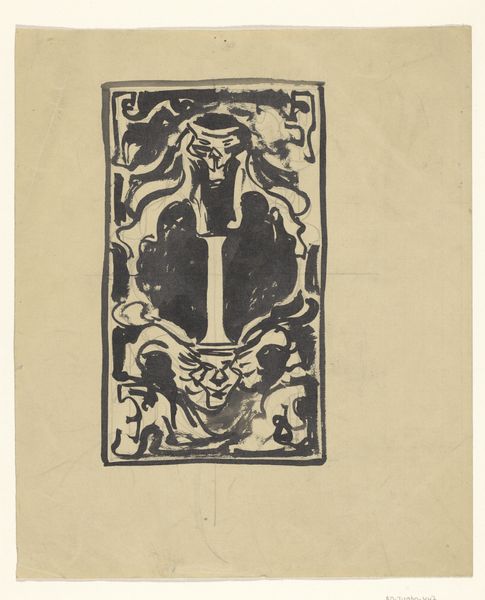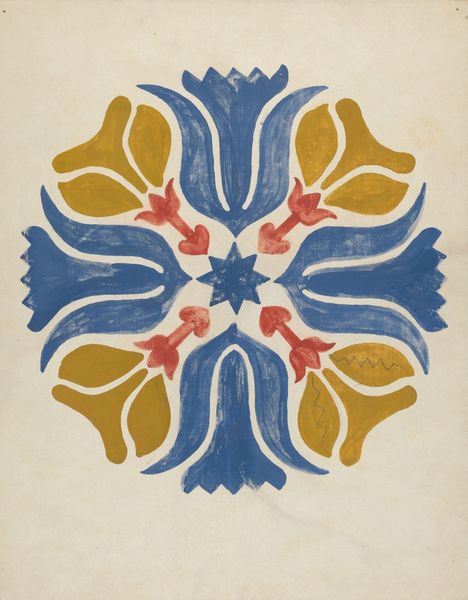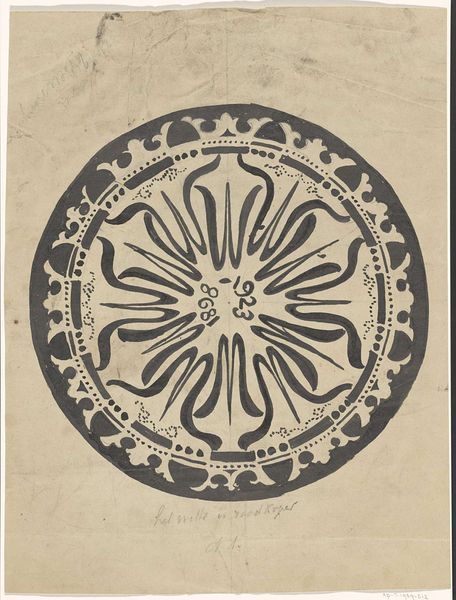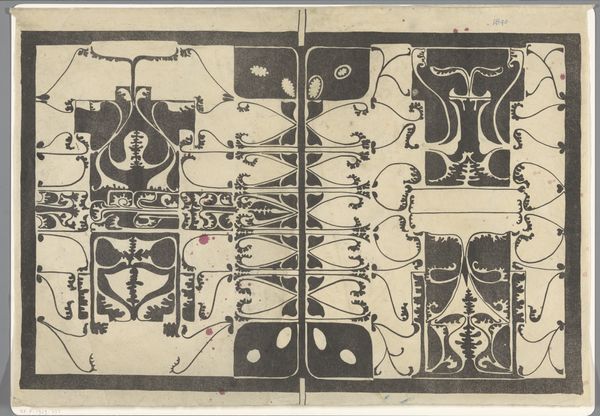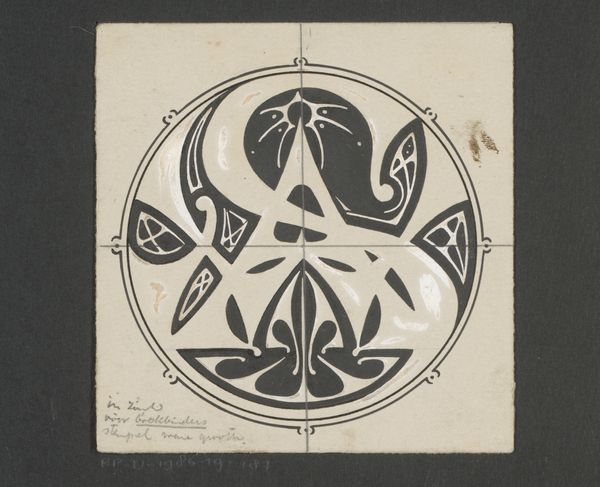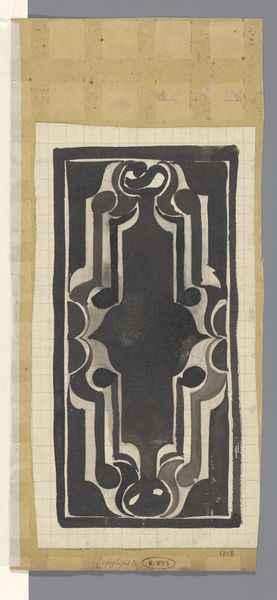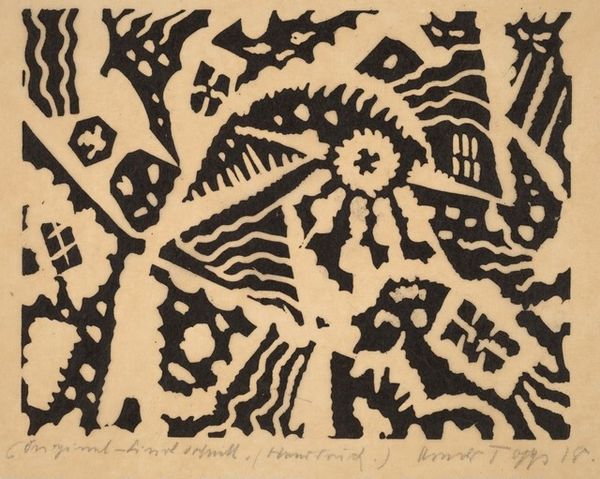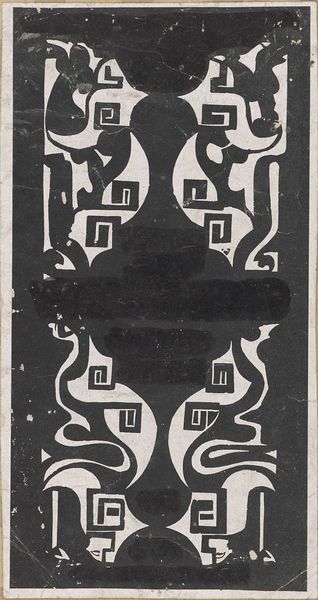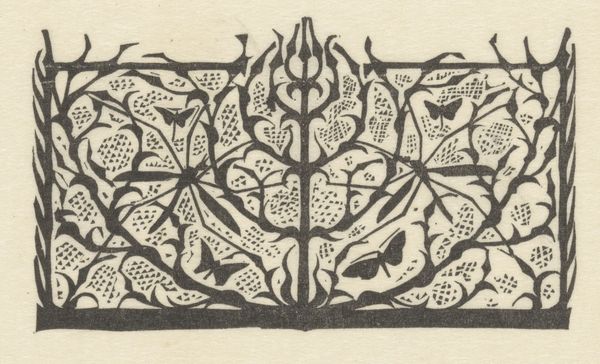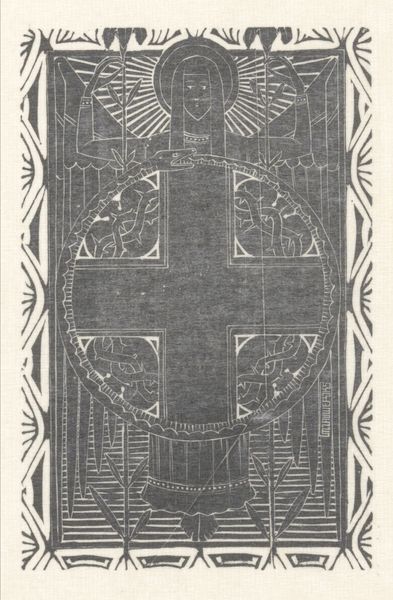
Ontwerp voor een bord met twee gestileerde dieren 1874 - 1945
0:00
0:00
careladolphlioncachet
Rijksmuseum
drawing, ink
#
drawing
#
art-nouveau
#
ink
#
geometric
#
abstraction
#
decorative-art
Dimensions: height 272 mm, width 365 mm
Copyright: Rijks Museum: Open Domain
Curator: This ink drawing from the Rijksmuseum collection, "Ontwerp voor een bord met twee gestileerde dieren", or "Design for a plate with two stylized animals", made sometime between 1874 and 1945, showcases the decorative leanings of Carel Adolph Lion Cachet. Editor: My immediate response is that it feels intensely symbolic, but also contained. The stark contrast and circular format almost lend it the air of a heraldic crest, reimagined through abstraction. Curator: Absolutely. Cachet worked during a fascinating period where art became increasingly intertwined with national identity and design reform movements. This artwork presents an intersection of graphic design with symbolist representation, reflecting broader cultural anxieties of this historical period. How can design communicate national meaning? What is the social and institutional impact on artwork that promotes design with clear function? Editor: And of course, it can't be divorced from the broader cultural moment and impact of Art Nouveau— the rise of new design principles, the emphasis on stylized organic forms, and this idea of nature, really, being rendered into clean lines. The representation of the animals—they could be cats, birds or maybe griffins— almost seems secondary. I think its success resides less in how it communicates animality and more in its geometric composition, its appeal as decorative art. I'm interested in how such simplification and symbolism reflect power dynamics or cultural attitudes toward nature. Curator: Consider, also, how institutions like the Rijksmuseum shape the meaning of objects. By including this plate design, the museum presents this form of decorative art and asks us to contemplate the fine-art design divide. The placement elevates the sociopolitical history of applied art and acknowledges its relevance in creating artistic impact. The geometric form, a simplification that's reflective of a machine-driven future, can it also communicate nature’s potential through an artistic message? Editor: Right, it also prompts us to reconsider the social status inherent in artistic mediums— and whether those assigned labels still ring true in our own moment. It brings art into everyday life, even if that is as "mere" ornamentation on a plate. Thanks, by thinking through its social location, I wonder what kinds of possibilities might occur if we really committed to challenging boundaries today. Curator: And in Cachet’s design, one gets to rethink abstraction and utility, asking questions and encouraging critical consideration of societal values and potential new meaning of imagery from the past.
Comments
No comments
Be the first to comment and join the conversation on the ultimate creative platform.
